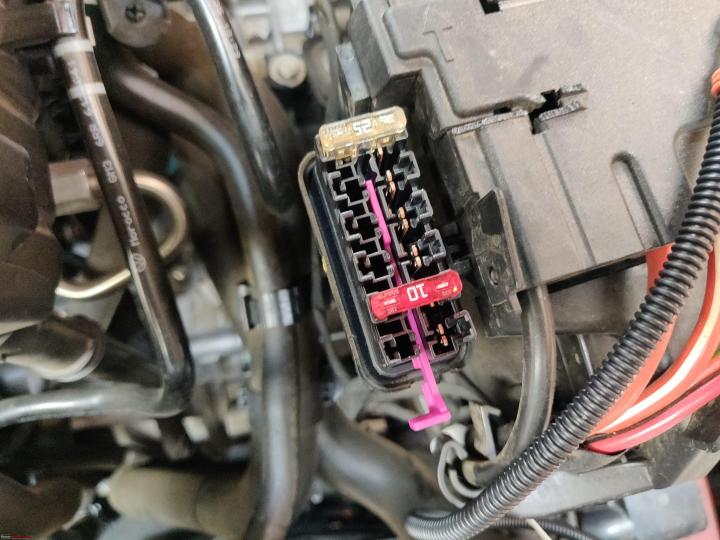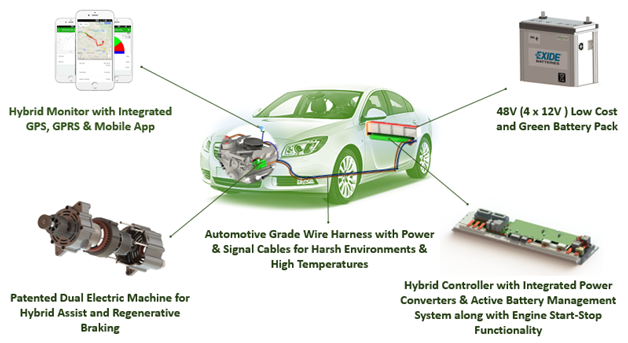News
How I retrofitted a CNG kit on my 12-year-old Santro Xing
The Santro now runs on both, petrol & CNG and returns a mileage of 22 km in mixed conditions with AC on.
BHPian justadiz recently shared this with other enthusiasts.
Hello Everyone
First of all, I'm dedicating this post to every other TeamBHPians who made their posts on this specific matter before which immensely helped me, hopefully, this post will provide insight to someone who may stumble upon it in the far future.
The Car:
The car in question is a 2012 Santro Xing GLS, it has been in our family ever since we bought it in the spring of 2012 and has clocked 94,000km on the odometer, running purely on Petrol. On petrol, it returns a measly 9km/Litre running with full AC in City conditions and goes up to 12km/Litre on the Highway.
Why CNG:
As you might know, thanks to all sorts of things, the Post Covid era witnessed a sharp increase in fuel prices, climbing from the mid-70s to hitting over 100 rupees per litre for Petrol, combined with economic conditions, inflation all (combined with my cars already low fuel efficiency) meant that we couldn't drive as much as we used to do in the pre-2020 time period. Thankfully, over the past few years, there has been an upsurge of CNG adoption here in the southern part of India, with CNG filling stations being built and LPG retrofitters adopting CNG retrofitment, which opened up the possibility of having a choice that didnt involve getting a new car. (Petrol costs 109/litre, CNG costs 88/kg in my area)
The Research Begins:
In the pursuit of educating myself on this new alternative fuel option and its viability, I stumbled upon this website, which has been helpful.
I need to have my sources backed up with strong user feedback since I had to convince my father who was against the idea of retrofitting CNG.
Sequential or Open Loop:
The retrofitters in my area dealt with either Open Loop or Sequential Injection Kits, however, considering the age of my car and the fact that we might use it for the next 5 or so years before selling it off meant it didn't make much sense to invest in a 50,000 rupees Sequential Kit, besides I thought to myself- "If Open Loop system is good enough for the Kaali Peeli Santro Xing running the Taxi Infrastructure of Mumbai, its good enough for my use", however, this decision would come back to bite me in the future.
Biting the Bullet:
Finally, we settled on an installer near our house with reasonable reviews on Google, who gave me a quote of 38k for a Lovato Open Loop Kit, Timing advancer and a 10kg cylinder. The other best installer in my city quoted 63k for a sequential kit and he said he doesn't do an open loop, he had a very rude attitude and a huge ego that turned me away. In any case, before the day of retrofittment, I gave the car to HASS and serviced it put in a new set of spark plugs and spark plug wires, cleaned out the throttle body and got a new air filter.
On the 10th of February, I gave the car to the CNG Fitting guys in the morning, I got the car back at 9:30 PM, and they took me on a test drive and everything seemed good, so I paid them 38k and I thought to myself, "that's a job well done".
Trouble Begins:
Usually here on teamBHP and generally, I've seen people reporting issues 5000, 10,000km after retrofitting. However, I had the luck to get issues a lot earlier, as in literally 5 kilometres after getting off the compound of the fitment centre. After driving for a couple of kilometres, I stopped to take a phone call and shut down the engine, when I restarted the engine after a couple of minutes, it wouldn't idle correctly on petrol and the engine shook violently, and the only way the engine stays works is if I'm on full throttle, if I let it go, the engine shudders, accelerate irregularly, the time was almost 10 PM, I called the guy who fitted it and I sent him the location, he came to where I stalled and tweaked around under the hood and got it started it again. But after some time, it stalled again, and I was stuck in a bad part of the town, in a stalled car. It wouldn't start no matter what I did, I begged the car and it finally started after multiple attempts, and I had to drive the 4 or 5km home at full throttle eating through 1/2 of my clutch's life and burning lots of petrol. The next day was Sunday, and I was stuck at home, on Monday, the CNG guys came to my home tweaked around, and replaced the Emulator, yet the issue didn't go away.
At this time, I got in touch with TeamBHPian @HimanshuKenshin who has posts regarding CNG conversion and his own experiences with CNG, and we came to the conclusion it was either the wiring issue or the reducer was faulty and leaking gas while the engine was running and messing up the AFR.
Now, the engine runs smoothly on CNG. Still, on Petrol, it was acting really bad, always stalling, with long cranks to start, and refusing to stay working unless I was on full throttle, and the CNG guys started coming up with an absurd diagnosis to shuttle me between the petrol mechanic and CNG mechanics like the Fuel Pump is faulty. I needed to replace it, and that made me lose my cool. I demanded them to fix my car which was running fine on Petrol before they laid their hands on the car. They told me to bring the car on the next working day, I had to take the entire day off and lost my college attendance, however, they managed to fix the issue and tried to blame the engine was overheating and I needed to clean my radiator and flush out the cooling system. Although I knew that wasn't the issue, I was tired of all this running around and the coolant system was already due for a cleaning, got it cleaned by our family mechanic and started driving around.
Now, on CNG, I found the car was quiet and had sufficient power, but when you applied full throttle suddenly, the car seemed to bog down a bit, and I was getting a measly 10km/kg. I took it to the CNG guys to get it tuned, and they just adjusted the gas flow to a point that it was running way too lean and the engine was shuddering and felt like it was about to fall apart, I asked them if that was supposed to be normal and they told me they can't do anything about it since its an open loop and its normal. I realized it was pointless to talk to them, so I followed guides from Team-BHP to tune the CNG system myself to a point where I thought it was acceptable.
500 KM on CNG:
At the moment, the car is running fine on both petrol and CNG, I procured a cheap Bluetooth OBD2 scanner to scan the ECU since I had an engine warning light, it was a P0130 code for a Faulty Oxygen Sensor, and after checking the real-time data, I realized on CNG, the o2 sensor gets cut off and on Petrol, it's back online, this causes the cars ecu to think that the O2 sensor is faulty and throws the code, I cleared it and it comes back often, it doesn't affect the car's performance in any way.
As for Performance, I tuned the CNG System to a leaner setting, it idles ok with/without AC on, the pickup is slower than petrol, but it is acceptable, and you need to downshift a lot more often unlike in Petrol
Mileage:
20-22km on mixed driving conditions with AC always on
Conclusion:
So far, it's alright, yeah, if I went for a Sequential kit, but I've noticed a trend between CNG installers that one vendor won't touch the kit installed by another vendor. If your vendor is bad and you have a sequential kit, you are stuck with him since you need the specific software to tune the CNG system on sequential. Still, since I had a manual system, but if fitted by a reputed good quality installer who knows what he is doing, Sequential Kit is the way to go, also most cars these days use a Drive-By-Wire throttle, so sequential is the only choice you have, either way, ill update my experience on this thread. I'll post the pics below.
Cheers.

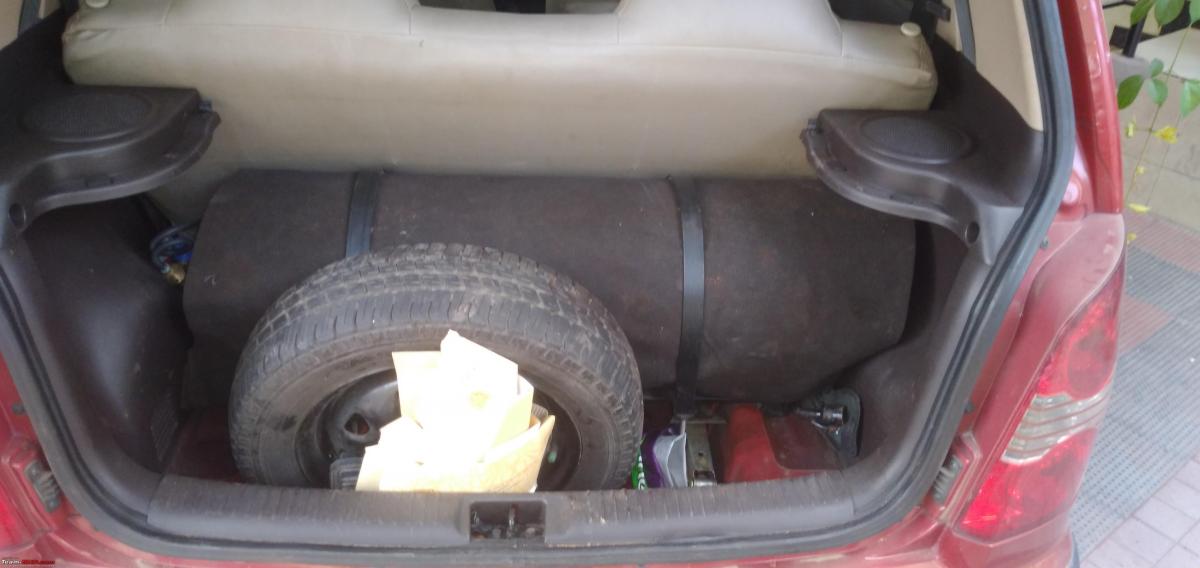
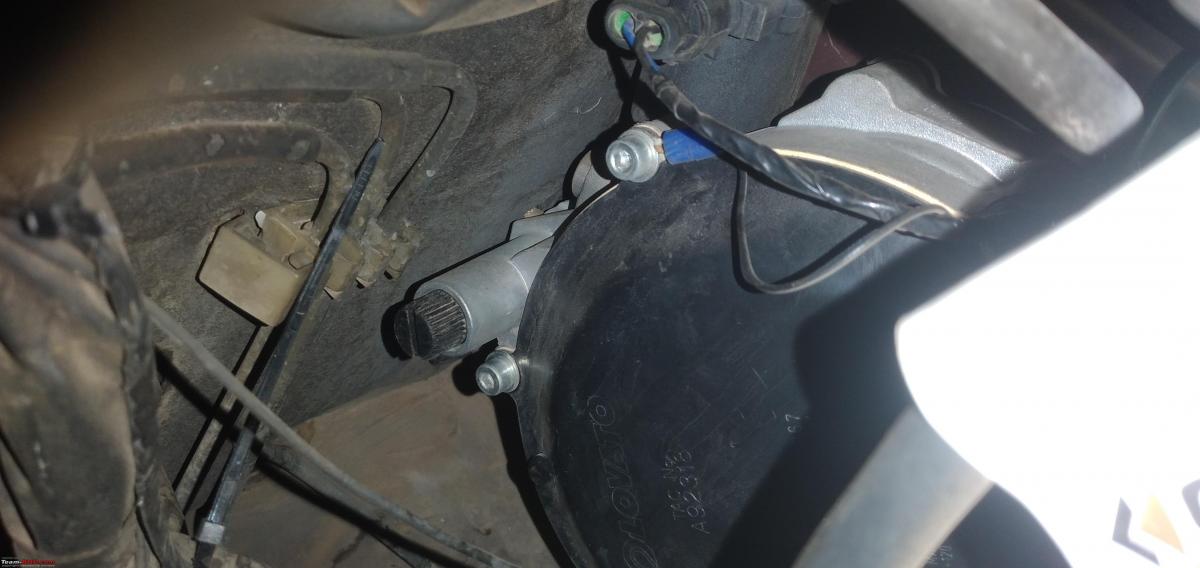


Check out BHPian comments for more insights and information.
News
Explained: How to tap power for retrofits & accessories in a VW Polo
The contacts and wires you will install or the wires already present will be locked by a Pink Locking tab, which needs to be slid out before we can insert a new power line into place.
BHPian fluidicjoy recently shared this with other enthusiasts.
When I received my OEM Bixenon Headlights, I still had not completed the BCM Max upgrade and so I needed to use an emulator to enable most of the primary functionality of these headlights. The emulator is wired in to the stock headlight connector, but it also needs an independent line of power, which we take from a small fusebox located next to the battery.

This fusebox is enclosed by a waterproof lid, which can be simply taken off by prying from the sides, as illustrated here.


The contacts and wires you will install or the wires already present will be locked by a Pink Locking tab, which needs to be slid out before we can insert a new power line into place.

You don't need to remove the pink locking tab all the way, unless you're using the last socket. The bottom of the fuse-socket will also have a rubber stopper for waterproofing, so make sure you push that down and out of the fusebox, before inserting a new wire into the fuse point. I completed the wiring with a 15A fuse.


Make sure to slide the locking tab back in place. You can very well use this engine fusebox for other accessories that require power like HIDs etc. This is a much cleaner way compared to directly tapping power across the Battery, which is the common Jugaad many folks might be tempted to resort to. Test the fusebox to check if the electrical fuse-point is active when ignition is ON or if it is always ON as this will determine if this particular fuse point is right for you. For the Bi-Xenon Headlight emulator, I did not have any electrical issues or parasitic drains, but as I write this two years later, I do not remember what kind of fuse-point it was. Here's a look at the stock T10 Headlight connector, in front and rear view, and the here's the plug and play emulator which goes into the stock T10 socket.
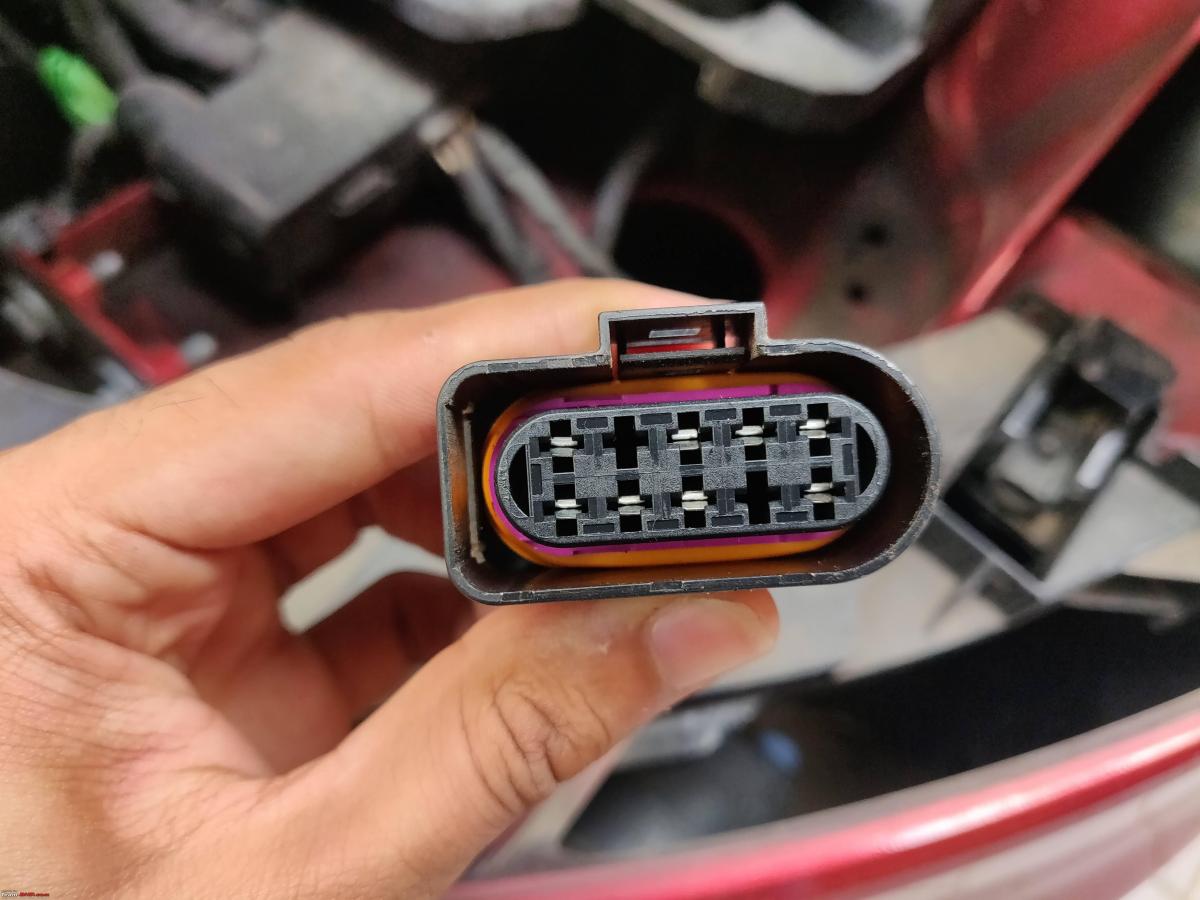


I believe this small post shall help many folks who wanted to add a thing or two in the engine bay. With this writeup out of the way, I can complete my writeup about the Bixenon Headlights themselves.
Read BHPian comments for more insights and information.
- Tags:
- Indian
- Volkswagen Polo
- retrofit
News
Review: Grab handles with built-in dampers retrofitted in my VW Polo
These grab handles that I purchased could easily be a decade old, yet they felt just like new, with no creaks, no cracks and built to last.
BHPian fluidicjoy recently shared this with other enthusiasts.
I am writing about another small mod which was performed quite a while back on this car. It is a very old retrofit and has been thoroughly and comprehensively documented by Gannu in form of photos and videos and I'll leave a link to the thread here.
Here are what the grab handles with built-in dampers look like. Notice the white part, which is the damper bead.



To retrofit them in the existing handle, here is what a damper kit looks like. I picked a few of these from Aliexpress, a long time back.
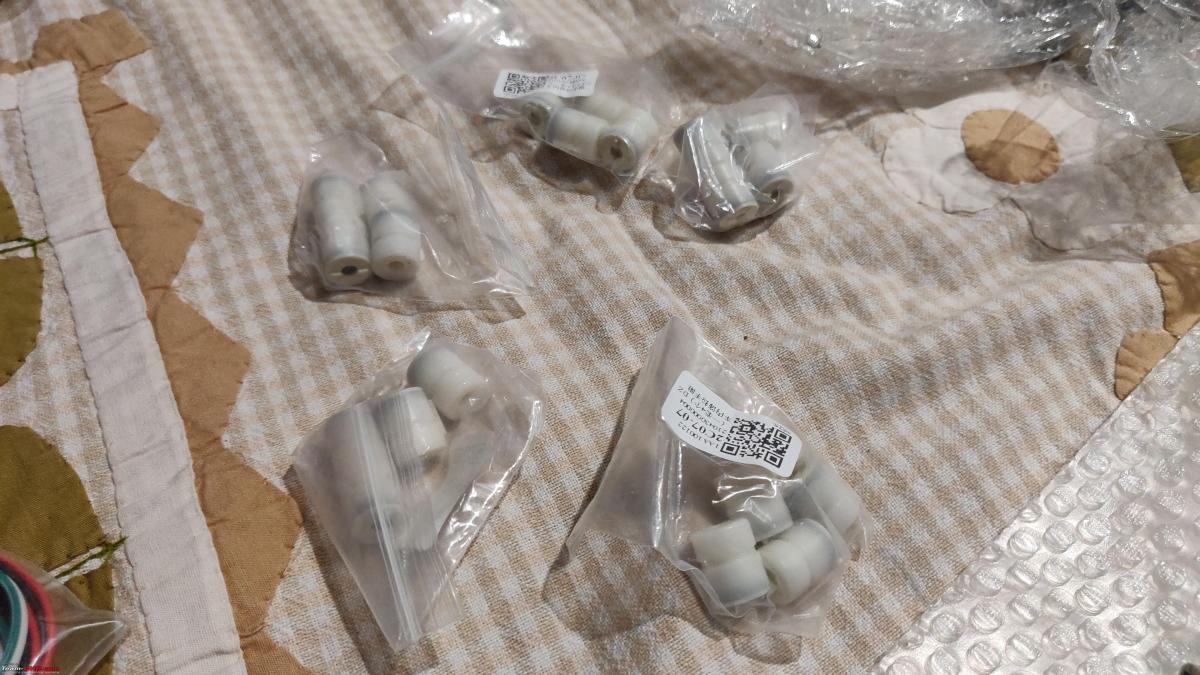
It is my opinion that I don't have the patience and I might lack the finesse required to modify a small object like the grab handles, so I did myself a favour and bought used handles with dampers built inside. What was intriguing was how good the quality of some plastic parts can be, and these grab handles that I purchased could easily be a decade old, yet they felt just like new, with no creaks, no cracks and felt built to last. Even the Indian grab handles display this excellent quality.
Nevertheless, to show you the nuisance associated with the old one, I've compiled a small video where you can hear the slapping sound that the old one made with the roof liner.
Check out BHPian comments for more insights and information.
News
Greaves & Altigreen to offer retrofit hybrid powertrain kits
Greaves Cotton has announced a strategic partnership with Altigreen Propulsion Labs, a US and Bangalore based start-up to give hybrid powertrain options to 3-wheeler and micro 4-wheeler commercial vehicles.
The partnership's first product launch will be Altigreen's Hybrid Power Intelligent Exchange Drive (HyPixi) which is a low-cost aftermarket hybrid powertrain. It consists of a 48V battery unit that will be installed in the boot of the car, a motor control unit and a motor-generator that will be connected to the engine via the engine belt. The system is ARAI approved and is protected by patents in USA and other countries. The product is also certified under the Central Motor Vehicle Rules (CMVR).
The retrofit HyPixi system does not require external charging as it incorporates regenerative braking. The system is similar to the SHVS mild hybrid offered by Maruti Suzuki on the Ciaz, Ertiga and the facelifted S-Cross, although they use a smaller capacity battery (12V). The company claims an improvement in fuel efficiency of up to 25 percent and a return on investment period of less than a year. Initially, the product will be available for 4-wheelers with gross vehicle weight of less than 2 tonnes.
According to Greaves Cotton, there are an estimated 5 million Greaves-powered vehicles on the Indian roads today. These passenger and cargo vehicles will be the first vehicles to be offered the hybrid retrofit solution in India through Greaves' 3,500+ aftersales network.




